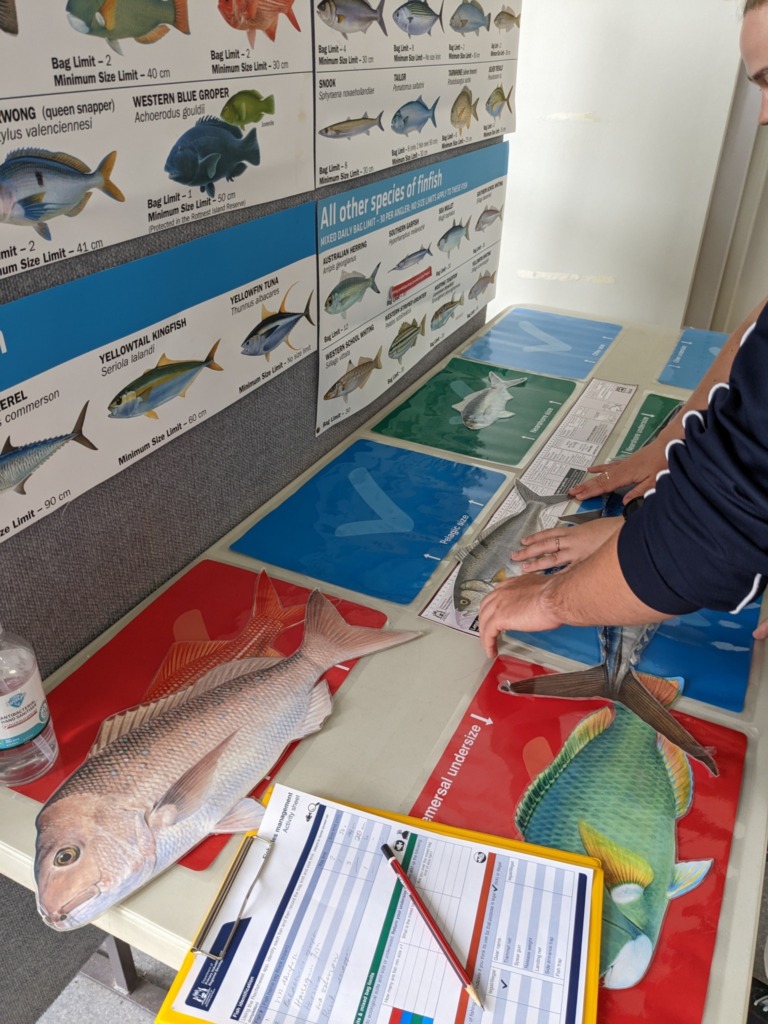This interactive activity gives students an overview of some of the fisheries management tools the Department applies to recreational fishing activity to sustainably manage our aquatic resources.

Duration: 1 hour
The role of the Department of Primary Industries and Regional Development is to conserve, sustainably develop and share the use of the State’s aquatic resources and their ecosystems for the benefit of present and future generations. To do this, the Department manages the fishing activity of recreational, commercial, and customary fishers.
In Western Australia, recreational fishing is a popular activity, with over 600,000 people participating in recreational fishing in 2020/21.
A key objective of fisheries management is to achieve a sustainable yield – the idea that given certain management arrangements, a specified number of fish should be able to be fished (removed from the water) each year, without depleting the population.
This activity asks students to complete several activities that expose students to the range of fisheries management tools the Department uses to ensure fish for the future.
Cost $5.00 per student
Activity outline:
In the Fisheries Management activity, students participate in five stations that introduce them to management measures that are enforced by the Department to ensure the sustainability of Western Australia’s fisheries. Students will explore the rules and regulations recreational fishers must follow and make connections between these rules and their role in ensuring Western Australia’s recreational fisheries are sustainable. Students will also learn about important catch care tips, which are encouraged to help protect our aquatic resources and ensure sustainable fishing experiences.
Through the completion of these activities, students will be able to:
- Use resources developed by the Department and other bodies to help identify the fish and other marine animals caught, and the associated rules with those species.
- Apply recreational fishing rules such as bag limits, size limits, and seasonal and area closures to fish and invertebrate species to determine legal daily catches.
- Describe the factors used to determine whether various types of fishing gear promote best practice for sustainable recreational fishing.
- Understand how the rules placed upon recreational fishing by the Department are based on fisheries stock assessments, such as understanding age structure and the biology of marine species.
Pre-excursion and post-excursion resources:
You may wish to use the following resources that introduce and apply the principles of fisheries management in your classroom before or after your excursion.
- The primary fisheries management strategies used by the Department to ensure the sustainability of Western Australia’s fisheries are describe in Fact Sheet: Fisheries Management.
- Lesson: Fishing Ethics and the associated Student Worksheet: Fishing code of conduct highlights the importance of recreational fishing to the community and leads your class to create their own fishing code of conduct based on sustainable resource management ethics.
- Lesson: Go Fishing and the associated Student Worksheet: Catch Log Sheet asks students to attempt to use sustainable fisheries management strategies to manage a fishery that is experiencing pressure from increasing technology and fishing efficiency.
The excursion activities are centered around key Western Australia fisheries. You can use the related resources to deepen student’s understanding of the biology of the species these key fisheries target and connect these to the recreational fishing rules that are applied.
